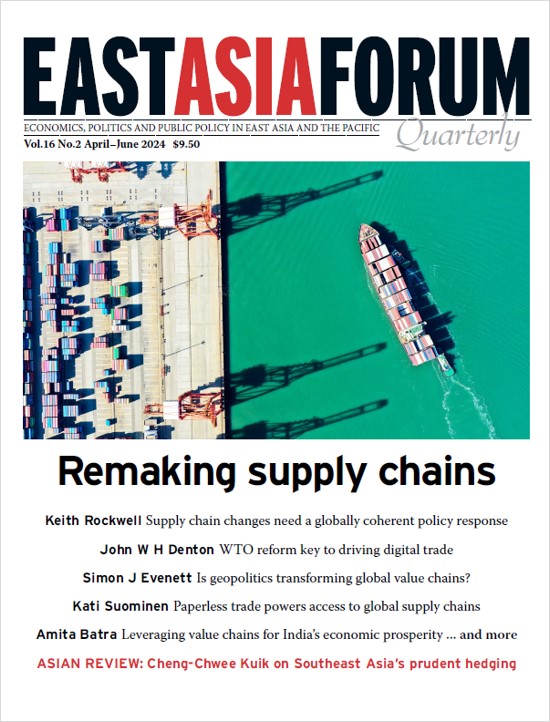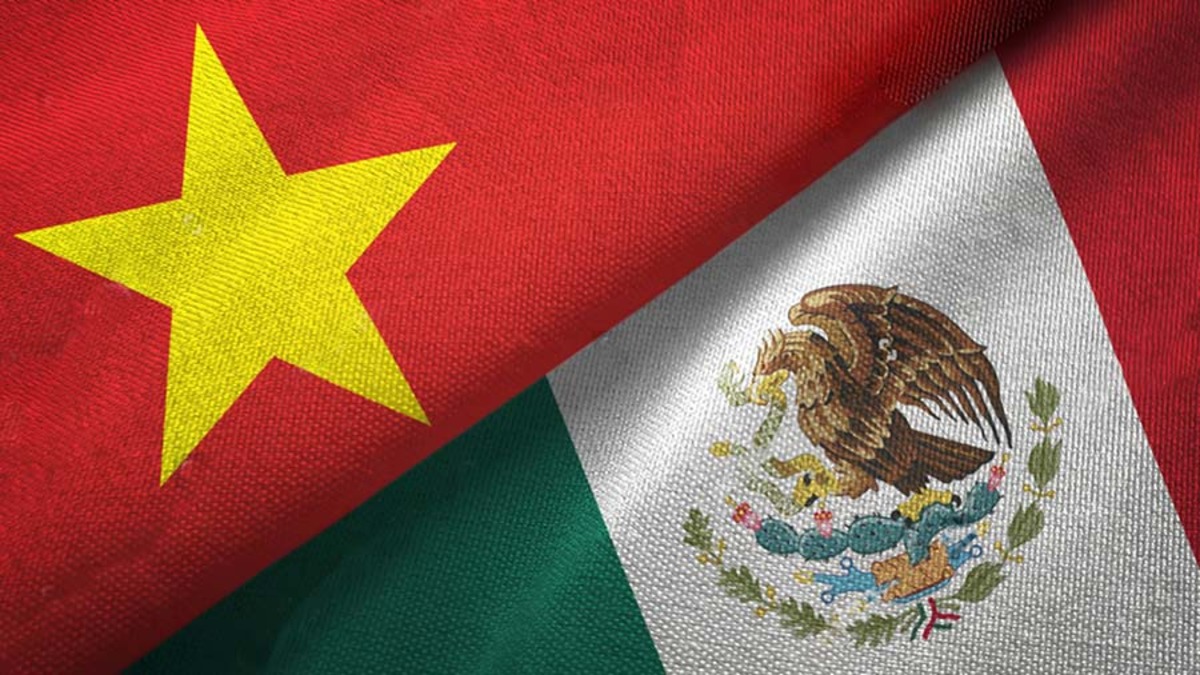Trade and geopolitics
East Asia Forum Quarterly: Remaking supply chains
Published 25 June 2024
The East Asia Forum, a leading platform for analysis on economics and international relations in the Asia-Pacific, launched its latest quarterly on Monday. This edition, sponsored by the Hinrich Foundation, takes stock of the rising role and increasing complexity of global supply chains in an age of geoeconomic fragmentation.
For all the limelight they get in an era of great power competition, supply chains are no more than a paraphrase for economic networks linking producers to consumers. In the last quarter-century of globalisation, supply chains became a measure of human achievement, a marvel that crossed nations, cultures and ever-higher topographies of specialisation in technology and international factors of production.
Then some of the world’s largest economies began turning towards self-sufficiency amid clashing national interests. A pandemic came, and war returned to Europe. Supply chains were seen as a vulnerability and a potential weapon that might be wielded to divide and conquer.
Geopolitics today leads a range of factors driving changes to how supply chains will be structured. Supply chains are no longer simply a sequence of business logic. They are becoming subordinated to statecraft and the rising forces of protectionism and national security.
The dense webs of economic interdependence that underpinned one of globalisation’s least acknowledged achievements, their part in lifting of 1.2 billion people from poverty in a single generation, are being reengineered away from multilateral cooperation.
A new understanding of chokepoints has emerged in this supply chain reshuffle. Some, from Suez to Bab al-Mandab, are literal. Others are more complex, such as worries about critical minerals and cutting-edge technologies in a world of geopolitical uncertainties.
This issue of East Asia Forum Quarterly details how far and fast global supply chains have had to morph to keep up with new customers more powerful than the mere consumer. It poses the irony of how digital innovation has never been better placed, or more poorly positioned, to amplify the contributions of trade to global peace. It interrogates the methods and consequences of governments walling off large sections of their economies. It warns of how supply chains reflect the drift from international rules.
We hope these essays expose the cost of the global economy’s retreat behind fences that restrict the gains that sophisticated supply chains bring from international specialisation and show how the new winners and losers in the supply chain reshuffle might sensibly respond.
***
This editorial and the Quarterly are also published on the East Asia Forum website. The issue was co-edited by:
- Chuin Wei Yap, Program Director, International Trade Research, Hinrich Foundation
- Jason Tabarias, Research Team Leader, Australian National University
© The Hinrich Foundation. See our website Terms and conditions for our copyright and reprint policy. All statements of fact and the views, conclusions and recommendations expressed in this publication are the sole responsibility of the author(s).







